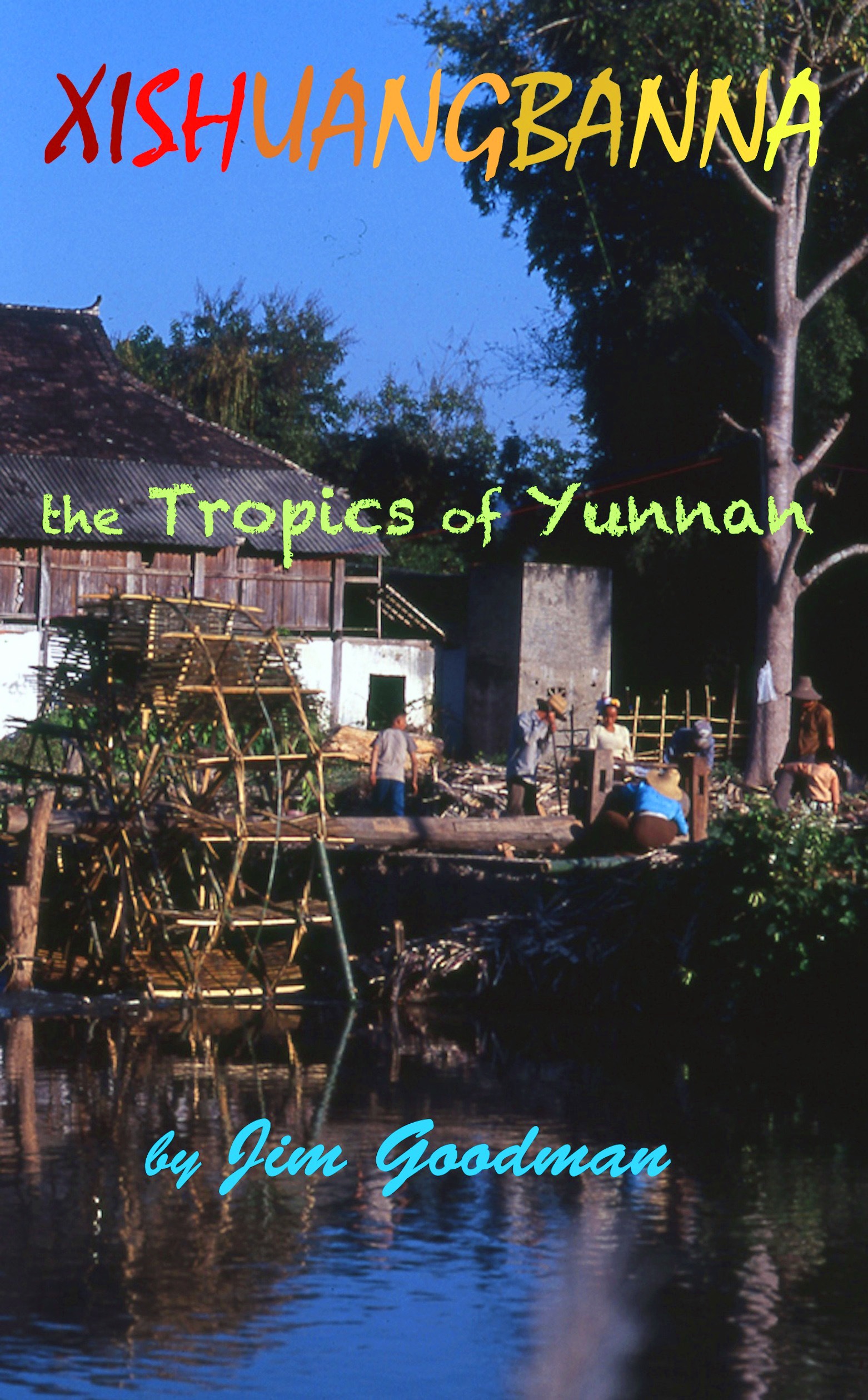Dancing under the Moonlight: the Costume Festival of Zhizuo

As villages go, Zhizuo could hardly be more remote. Some 70km from the county town, first along a winding mountain road, then on a deeply rutted track without public transport: even in the dry season it takes several hours and a bit of stamina to reach. Yet, at least on the first full moon of the year, the effort is worth it, as Zhizuo holds one of Yunnan's most colourful festivals, the Dress Competition Festival or Caizhuangjie 赛装节.
A Lahu minority Christian service in a hill village near Menglian.
Jim Goodman: The Akha: Guardians of the Forest

The Akha, in China known as the Aini branch of the Hani people, migrated from China southwards into Laos, Burma and Thailand. In this richly illustrated book J Goodman, aka 'Akha Jim', explains their life and culture.
A number of Chinese historic texts covering life and politics in Yunnan have survived over the centuries. I have translated a few of them.
Extremely beautiful Wenchang Temple, created in part by national level Intangible Cultural Heritage transmitter Li Yunyi.
A history trading post on the upper reaches of the Yangzi.
Jim Goodman: Xishuangbanna: The Tropics of Yunnan

For most of its history Xishuangbanna existed as an autonomous state on the remote southern periphery of China, run by the same Dai family since the 12th century. Lying in the tropical zone, on the northern rim of Southeast Asia, with flora and fauna not only unlike the rest of China, but even unique in Yunnan province, it has had close ethnic and cultural relations with its neighbors in Myanmar, Thailand and Laos. The valleys are home to the Dai nationality, while several ethnic minorities inhabit the hills. Xishuangbanna: the Tropics of Yunnan narrates the history and development of the Dai people, their culture, society and religion, from ancient times through the period of incorporation into the Chinese state. It also covers the characteristics of the lifestyle, culture and celebrations of the peoples of the mountains, as well as the economic and political changes of recent times and their effects on both hill and plain.
Suona melodies in the Pingchuan area of Binchuan.
Upcoming Festivals
| Name | Date |
|---|---|
| Festival of Lights | 26 Dec |
| Kuoshi Lisu New Year | 27 Dec |
| Bulang Harvest Festival | 27 Dec |
| Atai Birthday | 27 Dec |
| Mizhi Festival | 29 Dec |
| Coffee Festival | 01 Jan |
| Full Moon Ritual | 03 Jan |
| Yi New Year | 04 Jan |
| Slight Cold | 05 Jan |
| Birthday of the Sun | 07 Jan |
| Birthday of the Sun | 07 Jan |
| Gedong | 14 Jan |
Markets this Saturday
| Dali | 大理 |
|---|---|
| Zhoucheng | 州城 |
| Junhua | 均化 |
| Duomei | 朵美 |
| Yongping | 永平县 |
| Paiying | 排营 |
| Lijiao | 力角 |
| Haidong | 海东 |
| Shuixie | 水泄 |
| Shijing | 师井 |
| Diannan | 甸南 |
| Liuhe | 六合 |
| Heqing | 鹤庆县 |
| Jiangwei | 江尾镇 |
| Gonglang | 公郎镇 |
| Deju | 德苴乡 |
| Changyi | 长邑村 |
| 桥街 | |
| Beiya | 北衙 |
| 云南驿村 | |
| 前所 |
| Honghe | 红河 |
|---|---|
| Xinansuo | 新安所镇 |
| Niujiaozhai | 牛角寨 |
| Daheishan | 大黑山乡 |
| Leyu | 乐育 |
| Majie | 马街 |
| Lvchun | 绿春县 |
| Longwu | 龙武镇 |
| Xinxian | 新现乡 |
| Nanke | 南科 |
| Jinping | 金平苗族瑶族傣族自治县 |
| Mengqiao | 勐桥乡 |
| Baoshan | 保山市 |
|---|---|
| Manglong | 芒龙 |
| Lincang | 临沧 |
|---|---|
| Cangyuan | 沧源佤族自治县 |
| Luodang | 洛党 |
| Xinhua | 新华彝族苗族乡 |
| Shuangjiang | 双江拉祜族佤族布朗族傣族自治县 |
| Quannei | 圈内 |
| Zhenkang | 镇康县 |
| Junsai | 军赛乡 |
| Zhaotong | 昭通 |
|---|---|
| Shuanghe | 双河 |





